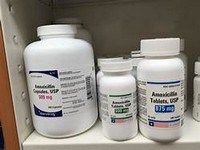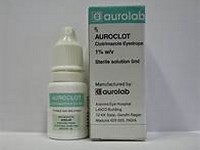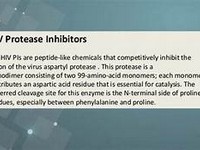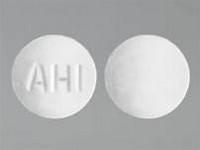rifampicin
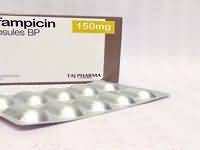
CLINICAL USE
Antibacterial agent:Tuberculosis Staphylococcal infection
DOSE IN NORMAL RENAL FUNCTION
600–1200 mg daily in 2–4 divided doses
PHARMACOKINETICS
Molecular weight :822.9 %Protein binding :80 %Excreted unchanged in urine : 15–30 Volume of distribution (L/kg) :0.64–0.66half-life – normal/ESRD (hrs) :2–5/1.8–11 DOSE IN RENAL IMPAIRMENT
GFR (mL/MIN)
20 to 50 : Dose as in normal renal function 10 to 20 : Dose as in normal renal function <10 : 50% – 100% of normal dose DOSE IN PATIENTS UNDERGOING RENAL REPLACEMENT THERAPIES
CAPD :Not dialysed. Dose as in GFR <10 mL/min HD :Not dialysed. Dose as in GFR <10 mL/min HDF/high flux :Not dialysed. Dose as in GFR <10 mL/min CAV/VVHD :Unknown dialysability. Dose as in normal renal function IMPORTANT DRUG INTERACTIONS
Potentially hazardous interactions with other drugsAnti-arrhythmics: metabolism of disopyramide, mexiletine and propafenone acceleratedAntibacterials: reduced concentration of chloramphenicol, clarithromycin, dapsone, trimethoprim and telithromycin – avoid with telithromycin; monitor LFTs in combination with quinupristin/dalfopristin; concentration increased by clarithromycin and other macrolidesAnticoagulants: reduced anticoagulant effect of coumarinsAntidiabetics: reduced antidiabetic effect of chlorpropamide and tolbutamide; concentration of rosiglitazone, nateglinide and repaglinide reduced – may need to increase dose of rosiglitazone; possibly reduced antidiabetic effect with sulphonylureasAnti-epileptics: reduced concentration of phenytoin and lamotrigine Antifungals: concentration of both drugs may be reduced with ketoconazole; reduced concentration of fluconazole, itraconazole, posaconazole and terbinafine; concentration of voriconazole reduced – avoid concomitant use; initially increases then reduces caspofungin concentrationAntipsychotics: reduced concentration of haloperidol, aripiprazole and clozapine – increase dose of aripiprazoleAntivirals: concentration of abacavir and tipranavir possibly reduced – avoid with tipranavir; concentration of amprenavir, atazanavir, darunavir, indinavir, lopinavir, nelfinavir, nevirapine and saquinavir reduced – avoid; concentration of efavirenz reduced – increase dose of efavirenz; avoid with zidovudineAtovaquone: concentration of atovaquone reduced (possible therapeutic failure of atovaquone)Bosentan: reduced bosentan concentration – avoid Calcium-channel blockers: metabolism of diltiazem, verapamil, isradipine, nicardipine, nifedipine, nisoldipine and nimodipine acceleratedCiclosporin: markedly reduced levels (danger of transplant rejection); ciclosporin dose may need increasing 5-fold or moreCorticosteroids: reduced level of corticosteroids – double steroid dose. Give as twice daily dosageCytotoxics: reduced concentration of erlotinib, sunitinib, dasatinib and imatinib – avoid with imatinib Diuretics: concentration of eplerenone reduced – avoidOestrogens and progestogens: reduced contraceptive effect due to increased metabolism Tacrolimus: reduced tacrolimus concentrationSirolimus: reduced sirolimus concentration.646 riFAMPiCin ADMINISTRATION
Reconstition
Use solvent provided Route
Oral, IV Rate of Administration
2–3 hours Comments
Dilute in 500 mL glucose 5% or sodium chloride 0.9%For central administration, 600 mg in 100 mL glucose 5% over 0.5–2 hours has been used (unlicensed). Stable for up to 24 hours at room temperature OTHER INFORMATION
Some units give dose in concentrations up to 60 mg/mL (in its own solvent) over 10 minutes, on prescriber’s responsibilityMay cause acute interstitial nephritis, potassium wasting or renal tubular defectsReduce dose if LFTs are abnormal or patient <45 kgAbsorption from gastrointestinal tract can be reduced by up to 80% by the presence of food in the gastrointestinal tract
CAPD exit site infections: 300 mg twice daily for 4 weeks has been usedRifampicin is excreted into
CAPD fluid causing an orange/yellow colourMonitor rifampicin levels if necessary In severe renal impairment there is no increase in half-life at doses less than 600 mg daily.
See how to identify renal failure stages according to GFR calculation
See how to diagnose irreversible renal disease
Home

